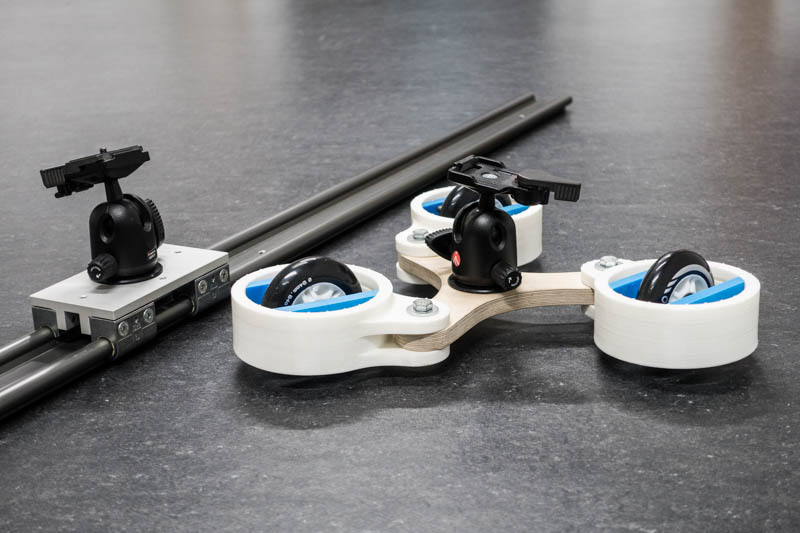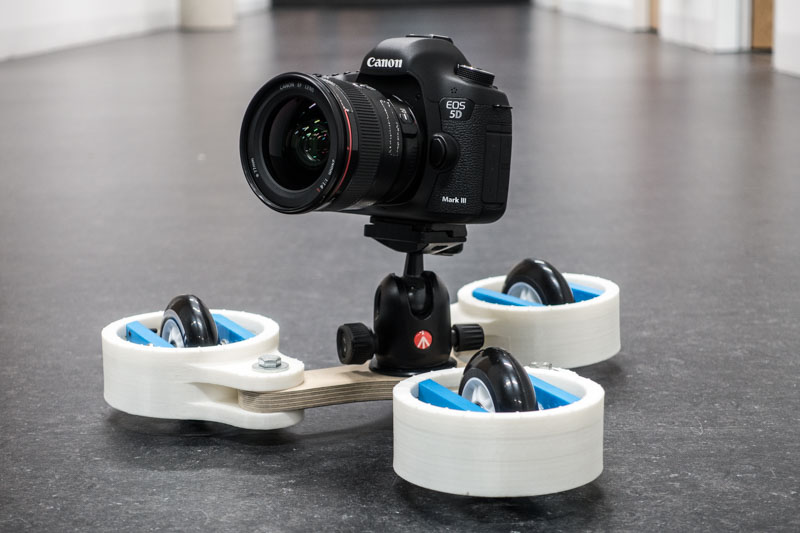08
The difference between a skater and a slider dolly, is in there way and degrees of freedom to move. Slider (mostly) run onto a rail with a preconfigured and very strict movement.To store or handle those slider dollys, you need a lot of time space. Small slider (where you even need to store the rail) normally only move in a line, without any curves. Instead of this, a skater dolly is nearly free configurable and really small. You only need a flat surface, turn a wheel or two into the right direction to control the movement (line, curve e.g.) and start the skater.
09

10
At the moment, my old skater dolly is dumb - there are no electronics, no motor etc.. It was built some years ago and got a simple DC Motor without any regulation in speed, distance or whatever. You had the choice to select the speed by adding or decreasing the number of batteries, between 1.5 and 12 Volt. The motor was a dumb RB35 geared DC Motor from a local supplier, which does 9RPM@12V (this is really slow on 1.5V!). Datesheet
11

12
The funfact of this construction: it does not stop at the end of the table, where your really expensive camera with the even expensive lens was taking photos. Making timelapse at night is a very longsome action - let me explain this:
13
Here at our degree of latitude, you need a average exposure time of 13sec per photo - to get some nice seconds you should take 300+ photos and mix them together with a framerate of 24 frames per second.
14
(13sec*300photos)/3600= 1.08h
15
Yeah! You got 300 absolutely perfect photos (...haha) - now you got exactly 12.5sec timelapse.
16
Problem 1: There are 1.08h of waiting. I don't know how often i realized too late that the skater reached or hit the edge of the table it crossed the last hour and my camera was almost falling down into the sea, a river or even some hundred meters into a opencast mine.
17
Problem 2: There is no - absolutely no - sync between the camera and the skater. At the moment, you connect the wire from the motor with the battery and the skater moves. Even when the camera is taking a photo.
19
Problem 3: No real speed control.
20
Goals: I'd like to develop a small microcontroller based mainboard, which includes a simple, small display, a bunch of buttons to control the skater, a DC motor with an encoder, a simple sync connection wire the N-plug to my camera and a battery.
21
This addition to my existing skater would add the option to set a maximum travel distance, speed and sync the travel moves to the camera shutter.

This work by Daniel Bruns is licensed under a Creative Commons Attribution-NonCommercial-ShareAlike 4.0 International License.